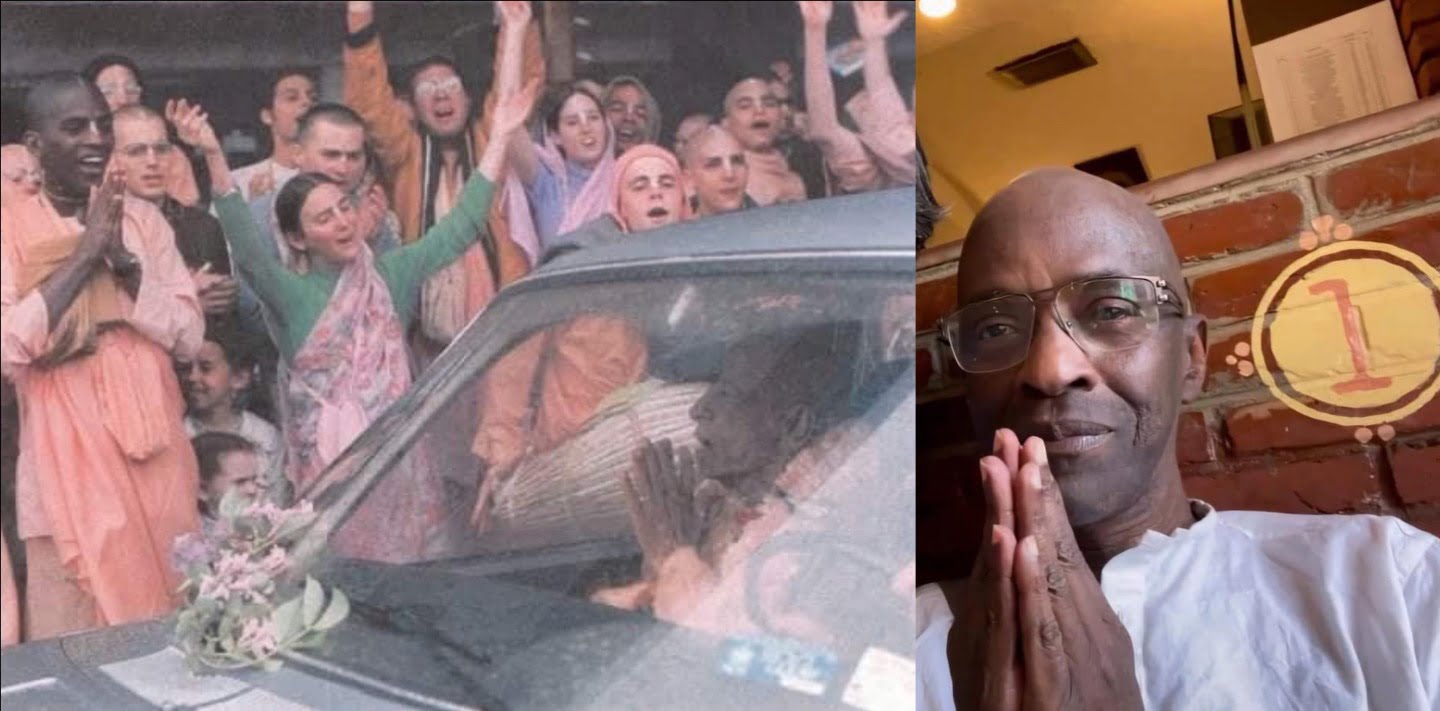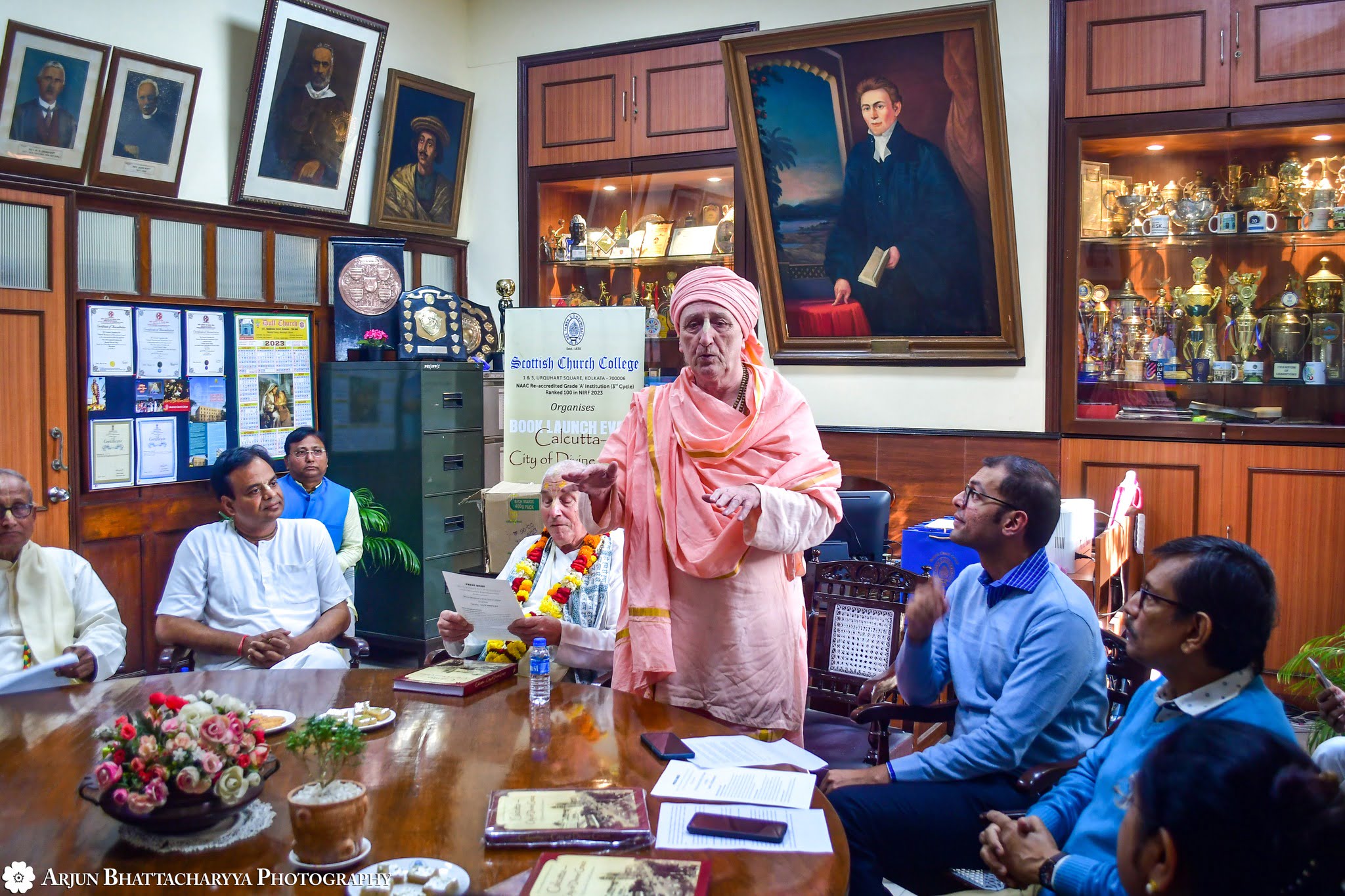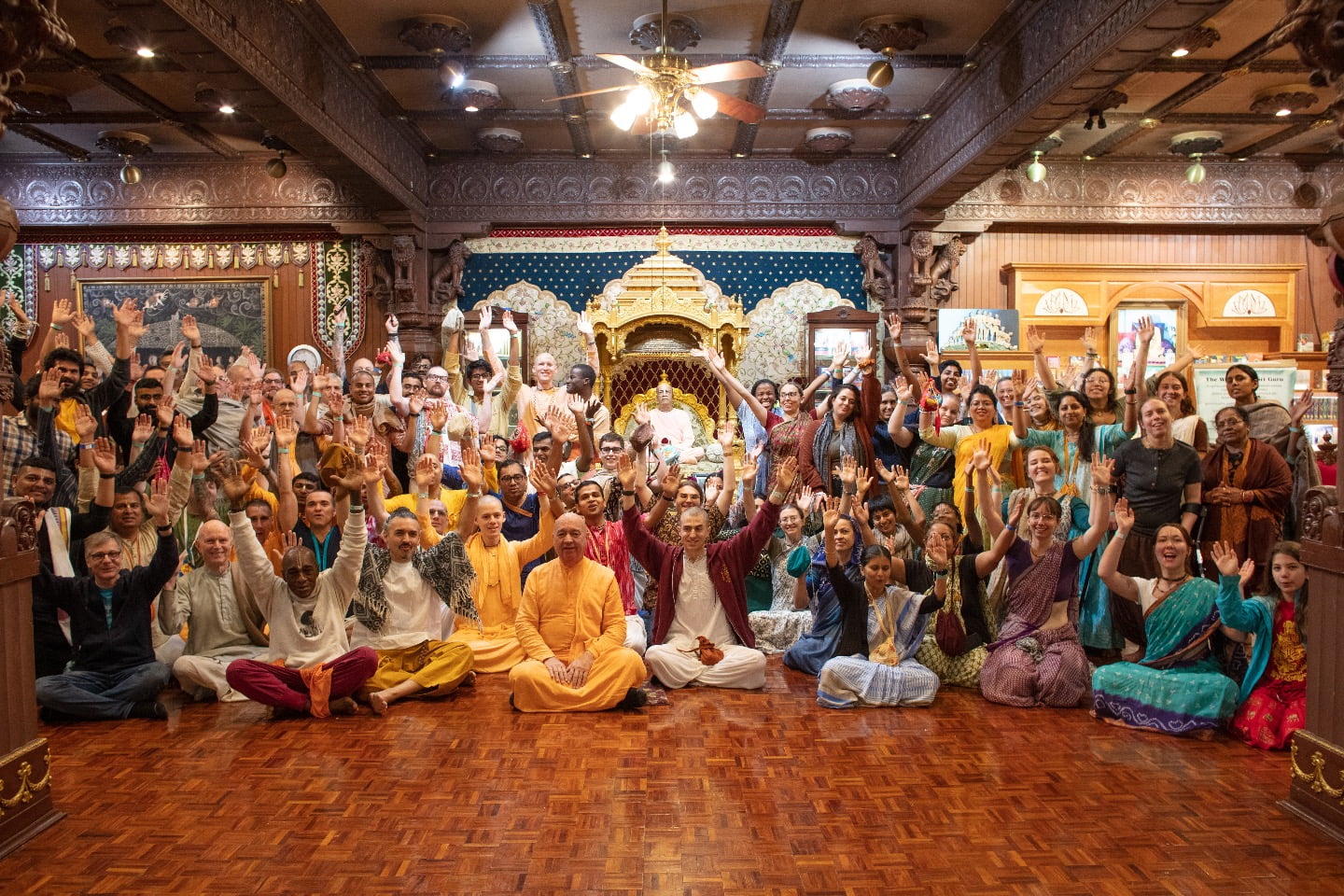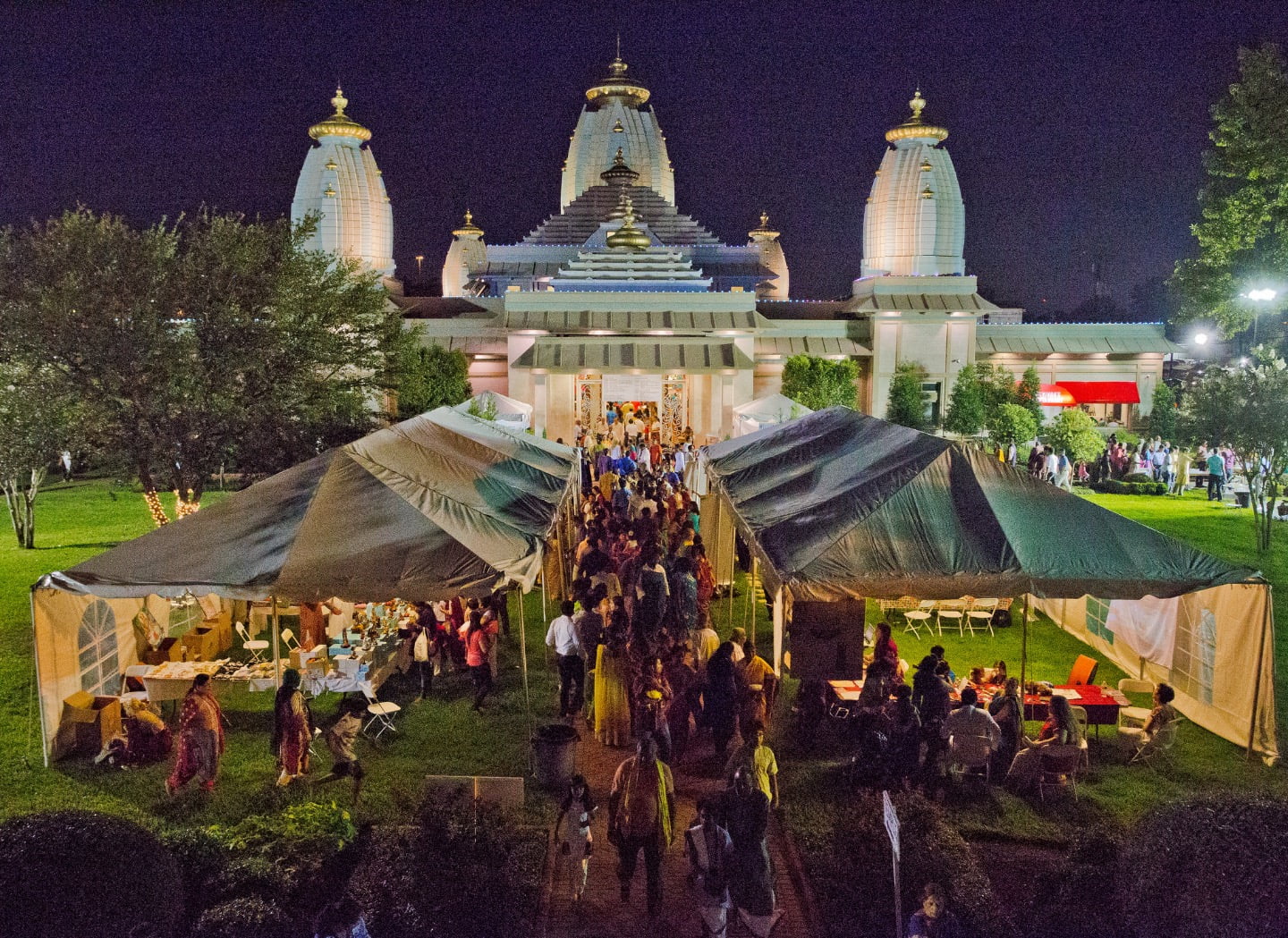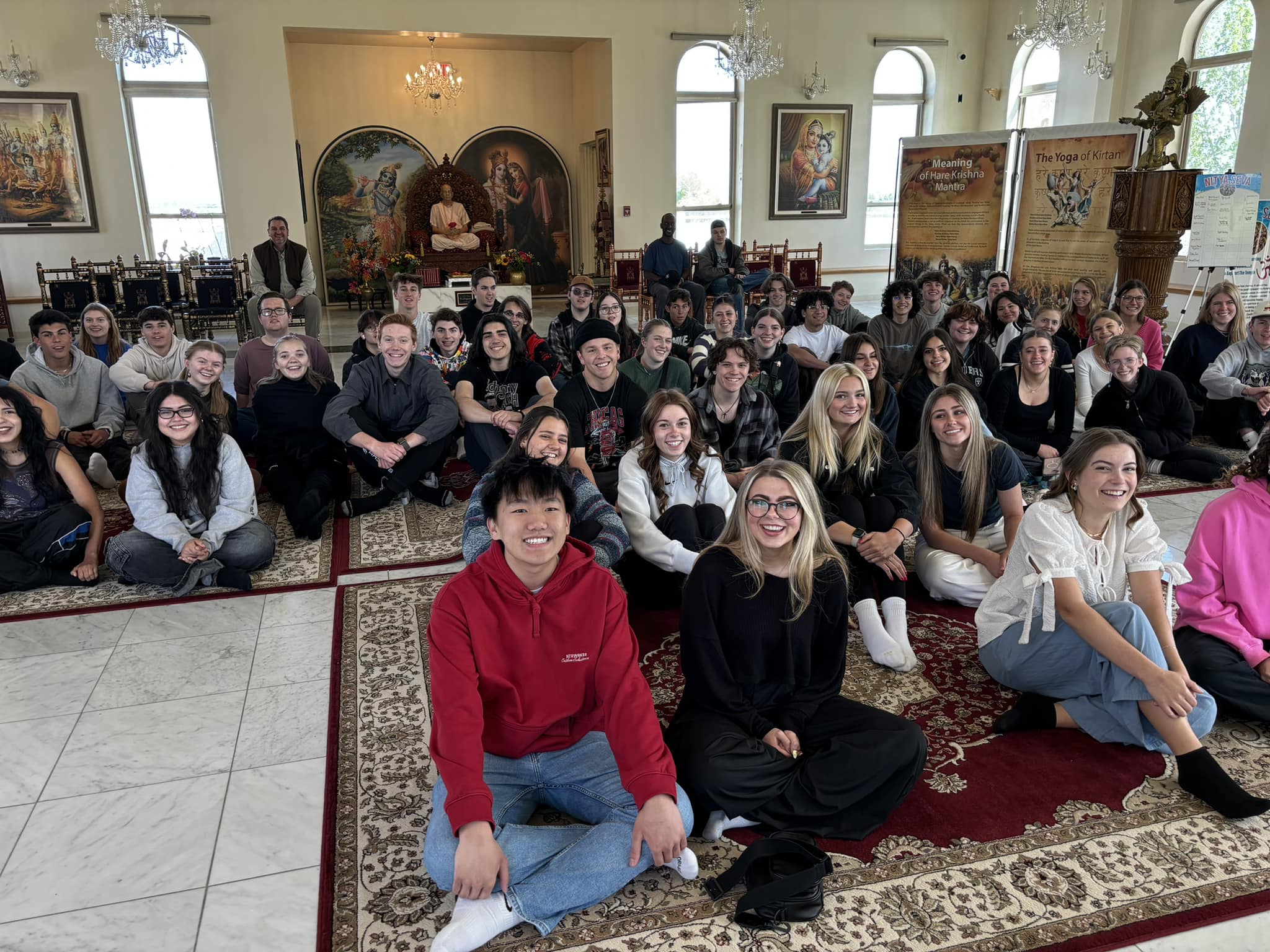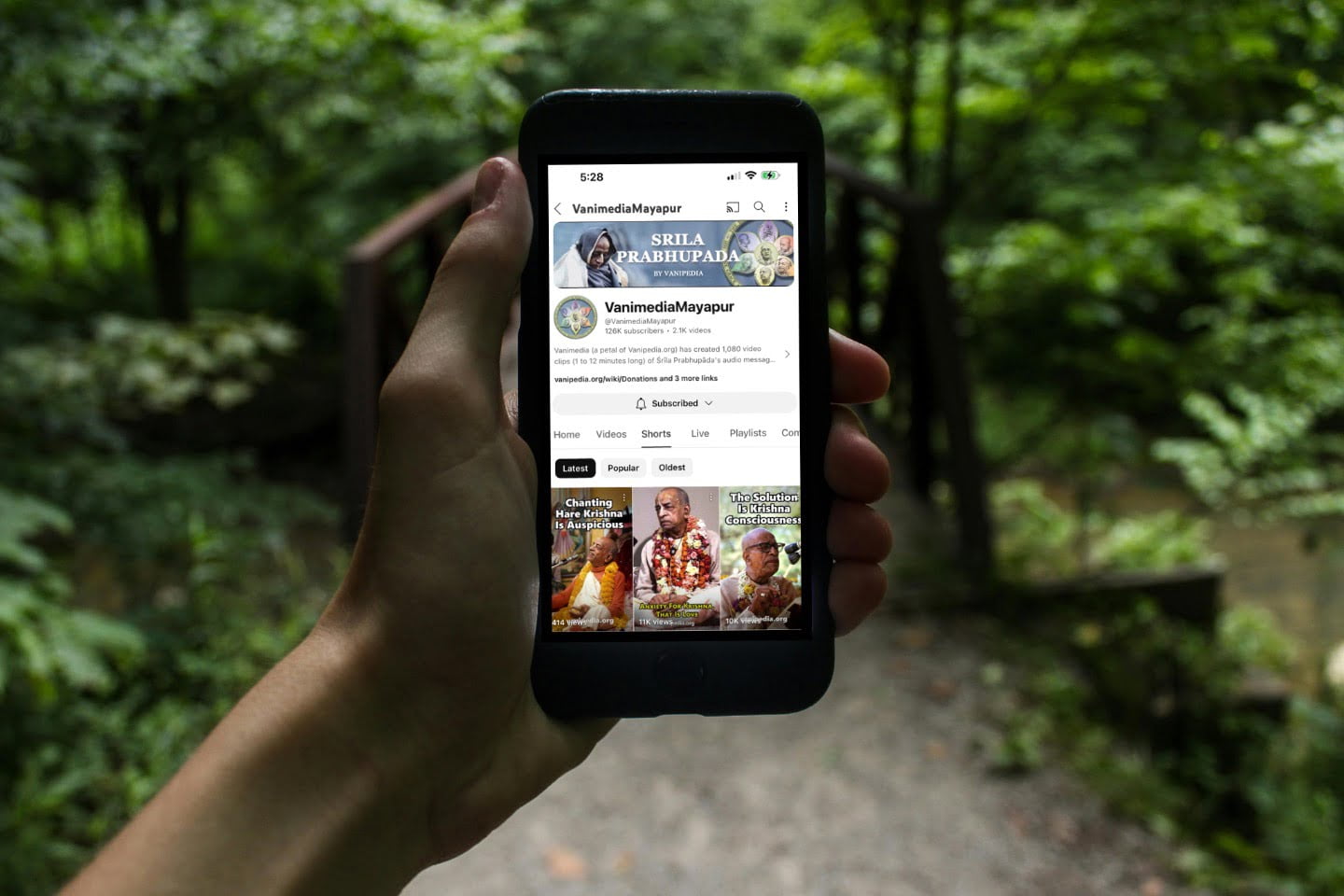Temple Profile: Detroit, USA
By Madhava Smullen | Dec 17, 2011
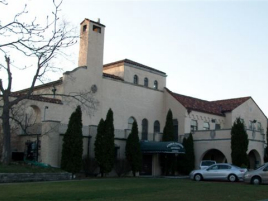
Name: ISKCON Detroit Devasadan Mandir (Temple of the Gods).
Address: 383 Lennox Avenue, Detroit, Michigan, 4215.
Phone: 313-824-6000 / 313-331-6740
Website: www.detroitiskconlive.com
Presiding Deities: Sri-Sri Radha-Kunja-Bihari, Sri-Sri Gaura-Nitai, Sri-Sri Jagannath-Baladeva-Subhadra, Sri Nathji, and Sri Bala Gopala.
President: Braja Kumar Dasa
Opened in: Summer 1983.
Temple Style: Historic art-deco mansion built in the early 1920s by the flamboyant auto industry millionaire and Cadillac President Lawrence P. Fisher. The 22,000 square-foot Mediterranean-style villa sits on four acres of gardens and cost $2 million to build in the 1920s. Adjusted for inflation today, it’s worth around $25 million.
Location: Urban neighborhood on the East Side of Detroit, which was very depressed in 1976 when devotees purchased the mansion. Adressing their concerns, however, Srila Prabhupada said that if the devotees moved in, the neighborhood would change. He was right. And although it has seen its ups and downs over the years, the area has experienced another renaissance in recent times. New apartment buildings and condos have been constructed, several of which the temple owns and uses as residential ashrams and rentable accommodation for its congregation.
Known for: Being purchased by Ambarish Dasa (Alfred Brush Ford), the great-grandson of automobile magnate Henry Ford, and Lekhashravanti Dasi (Elisabeth Reuther) daughter of United Autor Workers labor union leader Walter Reuther. Also for its FATE (First American Transcendental Exhibit) Museum, built by devotees and showing the philosophy of Krishna consciousness through entertaining dioramas and multimedia presentations.
Number of residents: Six, although there’s a congregation of 300 to 400 people.
Number of visitors: 200 to 300 people attend the Sunday Feast every week.
Best time to visit: Sundays, Sri Krishna Janmastami in August/September (attended by 1,500 people), and Rathayatra in mid to late July (attended by 3,000).

A Mansion Fit for God
Although Krishna consciousness was first established in Detroit in 1969 with a small temple on Wayne State University Campus, a new dawn was to arrive when the lease ran out on the old brick house.
In January 1976, after seeing photos of available buildings in the area, Srila Prabhupada went to view the Fisher Mansion—previously owned by 1920s auto industry tycoon Lawrence Fisher—along with his disciple Ambarish Dasa (himself the grandson of Ford Motor Company Founder Henry Ford), despite other devotees protesting that it was in a bad neighborhood.
Although the gardens and walkways were in disrepair, and the décor rather gaudy, Prabhupada saw the property’s great potential. Upon entering the vestibule and seeing the ornate Italian tiles and marble archways, he began to smile. But it was when he entered the ballroom, where the flamboyant Mr. Fisher once entertained his guests, that Prabhupada, with his spiritual vision, could see only one purpose for this building.
The huge room had a marble floor and high, vaulted ceilings painted to resemble an evening sky with clouds and stars, reminiscent of the open temple courtyards in his beloved Vrindavana, India. At one end were three marble arches, which led into an ornate boat house with an indoor boat well that opened onto the Detroit River. In Mr. Fisher’s day, his rich guests would dock their yachts there, and sometimes go out on pleasure cruises. But Srila Prabhupada saw something else: three ready-made altar spaces.
Ambarish and Elisabeth Reuther, daughter of Labor Union leader Walter Reuther, purchased the mansion for $300,000, and the devotees launched themselves into the extensive task of renovation.

A “FATEful” Grand Opening
“It took until the summer of 1983 to renovate the building, completely refurbish the grounds with a new design and walkways, and install gazebos housing the various incarnations of Lord Krishna,” says Malati Dasi, GBC for the Detroit area. “And then, of course, there was FATE.”
“Srila Prabhupada had very much liked the practice some Gaudiya Math temples had of making dioramas that depicted Lord Krishna’s pastimes to the general public, and wanted to use this type of outreach in his Western temples,” recalls Bhagavad-gita Dasa, who was a brahmachari at ISKCON Detroit between 1979 and 1985. “So in the 1970s, he sent Adideva, Bharadraja and other artists to the sacred town of Mayapur, West Bengal, to learn the traditional art of “doll-making.”
Upon returning, they created the First American Transcendental Exhibit (FATE) in Los Angeles, wherein visitors walked through diorama exhibits and multimedia presentations depicting Lord Krishna’s pastimes and the philosophy of Krishna consciousness. Then, on Srila Prabhupada’s instruction, Ambarish funded a second museum in Detroit.
“All the artists that had been working on FATE in LA came to Detroit, where they set up a small factory and began working on concepts and designs for the dioramas,” says Bhagavad-gita. “They would cast the figures in plaster and straw, then in fiber glass molds, and finally finish them with epoxy resin. To house the museum, they converted two of the boatwells, pumping all the water out of them, constructing a floor and walls, and creating a theater with tiered seating and two other rooms. Finally, myself and a devotee named Ameyatma Dasa installed slide projectors, special lighting and music, and other electronics.”

The plan was to have visitors first enter the theater room, where they would watch a film about Krishna conscious philosophy and reincarnation, then view the famous “Changing Bodies” diorama on a circular stage. Next, the stage would spin around to reveal another diorama depicting the birth of Lord Krishna.
Guests would then enter a second room, where they would stand and watch a multimedia presentation showing Lord Krishna’s father Vasudeva carrying the divine baby across the Yamuna river and delivering him to Nanda and Yashoda. In the third and final room, they would view dioramas with multimedia elements on three of Lord Krishna’s pastimes: Yashoda looking into Krishna’s mouth to check if he had eaten dirt, only to find the entire universe; Krishna playing with his cowherd friends and herding the cows; and Krishna dancing with the gopis in his Rasa-Lila.
The Devasadan Mandir, or “Bhaktivedanta Cultural Center” along with this elaborate “museum” and a Govinda’s restaurant, received its grand opening in the summer of 1983. With both its previous owner, and its new purchasers—Ambarish and Lekhashravanti—famous in the auto industry, the event drew an exceptional amount of public and press attention.
And the interest continued on after the opening. “We were the last stop on the popular ‘Auto Barons Tour,’ visiting the mansions of all the Detroit auto industry magnates, including Walter Chrysler and General Motors founder William Durant,” says Malati Dasi. “People would get a tour of the Fisher Mansion, eat prasadam cooked by our expert chef Mukhya Dasi, and learn about Krishna consciousness. Besides the tours, business at the restaurant was booming and book distribution was very active. It was an exciting time.”

Depression and Rejuvenation
The late eighties, however, brought with them “the ISKCON depression,” when many gurus left, their disciples followed suite, and funds, manpower, and motivation were at an all-time low. Only a skeleton crew of pujari priests were left, and, while they kept the Deity worship standards high, things at ISKCON Detroit looked grim. Although some developments continued—the remaining boat well was converted into an altar for new Deities of Sri Nathji and Sri Bala
Gopal in 1993—the restaurant closed down, the FATE museum was abandoned and used for storage, and outreach efforts slowed to a trickle.
Then, in 2006, everything changed when devotees at the Devasadan Mandir discovered ISKCON guru Jayapataka Swami’s Bhakti Vriksha system of congregational development through home programs.
“One multiplied to two, two to four, and the program took off like wildfire,” says Malati. “Today, while the temple is still quiet during the week, there are eight Bhakti Vriksha groups in different suburbs of Detroit, each with an average of thirty members. Devotees are regularly initiated by visiting ISKCON gurus, and, following the example of ISKCON Chowpatty, Mumbai, everyone does a little bit to help out the pujaris and other temple services. Every Sunday, the congregation gets together in the temple to chant a round of japa together. It’s bliss. But unfortunately, nobody knows about it. Everyone still thinks ISKCON Detroit is dead.”
The one-time Fisher Mansion’s resurgence is, no doubt, one of ISKCON’s unsung successes. Not only has Bhakti Vriksha enlivened the community, but in 2008, three devotees teamed up to revamp and remodel the disused FATE museum.

One of them was twenty-five-year-old Advaita Pran, an engineer, graduate of the University of Michigan and disciple of Jayapataka Swami, who moved into the temple after attending a Bhakti Vriksha group in nearby Ann Arbor. Upon seeing the flooded, moldy FATE museum, he was inspired to get it running again.
Seeing his enthusiasm, pujari and Vrindavan Gurukula alumni Radhe Shyam Dasa and Malaysian computer whizz Vijnesh soon joined him, followed by many other congregational members. Working with small donations of $50 or $100 at a time, the group removed every single chair from the theater and every panel out of the ceiling, cleaned them and replaced them spotless.
“They also put in new spotlights and speakers, replaced the old 1980s computers with brand new laptops, and updated the music and slideshow images to modern times,” says Malati. “They even added their own new features—for instance, now when Mother Yashoda looks into Lord Krishna’s mouth, we see slides on the ceiling showing what she saw.”
After a year of work, FATE reopened on Janmastami day 2009, and is now shown to a packed house of devotees and guests every Sunday, and at special request during the week.
Other renovation projects are also underway. After being closed for some time due to a caved-in ceiling, the bedroom Srila Prabhupada stayed in while in Detroit is being restored and has been reopened for chanting and classes. Meanwhile restoration work is also in the pipeline for ISKCON Detroit’s impressive collection of original Bhaktivedanta Book Trust artwork: the thirty paintings, some up to six feet in height, include Sri Keshava from the cover of the Sri Isopanishad, and the original Bhagavad Gita As It Is cover painting.

“Outreach is also alive and well,” says Malati. “We have three college programs, and a solid interfaith program by Advaita Pran Dasa and Bhakta Dave, a devotee of Krishna and practicing member of the Jewish community. In addition, about 1,500 people attended our Janmastami last year, which featured a swing festival, fireworks, and a ‘pleasure cruise’ on the canal for Radha-Kunjabihari, who were always the true Lords of the Mansion, even in Mr. Fisher’s time.”
The Detroit devotees lovingly and diligently take care of Their Lordships, maintaining six offerings and aratis a day. They also offer four new outfits to Radha Kunjabihari each year, which this year included a hand-sewn outfit made for Their birthday by the congregation and a handmade flower outfit on Radhastami.
Finally, community development is also active, with a new safe children’s play area opened recently to put parents’ minds at rest on Sundays. There’s also a Sunday school teaching Vaishnava skills to children up to twelve years old, a Kids’ Camp attended by sixty-three children annually on the Thanksgiving weekend, and a Montessori daycare center running during the week.
“In the future, we’re looking to expand our outreach to the suburbs, because that’s where most of our congregation is,” says Malati. “But Devasadan Mandir, the home of our heart and soul Sri Sri Radha Kunjabihari, will always be the center of ISKCON Detroit. And we want people to know it’s alive and well. Please stop by or give us a call—you’ll always get a personal response, some prasadam, and some of our warm hospitality.”





